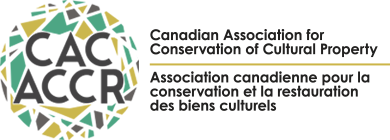J.CAC VOLUME 22 (1997)
Les matériaux d’Alfred Pellan
A retrospective exhibition of the works of Alfred Pellan, organized jointly by the Musée du Québec and the Musée d’art contemporain de Montréal, provided the opportunity to analyze the materials of 29 of his paintings, executed between 1928 and 1966. Instrumental methods employed were scanning electron microscopy/X-ray spectrometry, X-ray diffraction, Fourier transform infrared spectroscopy, gas chromatography/mass spectrometry, and polarized light microscopy. Data obtained on the supports, grounds, paint (pigments and binding media), and varnishes are presented. Pellan used a variety of painting materials, not to mention the unconventional materials he sometimes added to the paint. For works on canvas, he seems to have used mainly cotton or linen canvases, either commercially-prepared canvases or ones that he prepared himself. Among the pigments, were found traditional pigments, such as vermilion, ochres, ultramarine and bone black; nineteenth-century pigments, such as cadmium orange and yellow, emerald green and cobalt violet; and a wide variety of pigments developed during the twentieth century, such as toluidine red, hansa yellows and chlorinated para red. For works on canvas or on panel, oil paint was always used, with the drying oil being linseed oil, safflower oil or poppyseed oil. However, Pellan used various media, such as oil paint, watercolour and ink, to create his mixed-media works on paper. Analysis of the materials provided information concerning certain conservation problems encountered with Pellan’s paintings.
Download: JCAC22 Corbeil et al